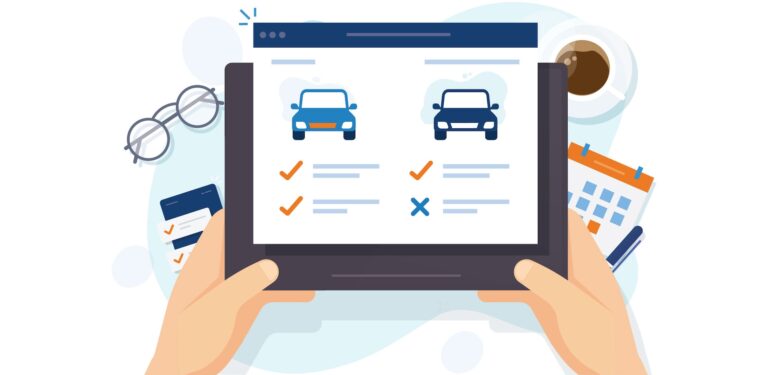How Automotive Sensors Improve Safety: A Closer Look at Smarter Driving
Modern vehicles are no longer just machines; they are intelligent systems designed to protect drivers, passengers, and pedestrians. At the heart of this transformation are automotive sensors. From monitoring road conditions to detecting potential collisions, sensors play a crucial role in making every journey safer. Understanding how automotive sensors improve safety helps drivers appreciate the technology behind their vehicles and make smarter decisions when choosing a car or upgrading features. If you want to stay informed about the future of safer transportation, this guide explores the essential role sensors play in modern automotive safety.
How Sensors Help Prevent Collisions Before They Happen
One of the most important ways automotive sensors improve safety is by detecting dangers before they turn into accidents. Forward collision warning systems, powered by radar and camera sensors, continuously monitor the distance between your car and objects ahead. If the system senses that a crash is imminent, it alerts the driver or even automatically applies the brakes through automatic emergency braking (AEB) features. Lane departure warning systems and blind-spot monitors use additional sensors to keep you aware of surrounding vehicles, helping to prevent side-swipes and lane-drift accidents on busy roads.
The Role of Sensors in Enhancing Driver Awareness
Driving safely isn’t just about reacting it’s about anticipating. Automotive sensors feed real-time information to drivers, enhancing situational awareness and reducing human error. Parking sensors, rearview cameras, and 360-degree monitoring systems help eliminate blind spots during low-speed maneuvers. Adaptive cruise control sensors maintain safe following distances without constant driver intervention. Night vision sensors, using infrared technology, detect pedestrians or animals beyond the reach of headlights. By constantly scanning the environment and alerting drivers to hidden threats, sensors act as a second set of eyes, making it easier to stay aware in complex driving conditions.
How Sensor Technology Supports Safer Autonomous Features
Advanced driver assistance systems (ADAS) rely heavily on sensors to safely guide vehicles with minimal human input. Lidar, radar, ultrasonic, and camera systems work together to create a detailed 3D map of the environment around the vehicle. Features like traffic jam assist, automatic lane-keeping, and highway autopilot use this data to maneuver through traffic safely. Although full autonomy is still being developed, today’s semi-autonomous features already enhance safety by reducing driver fatigue and minimizing the risk of accidents caused by delayed reactions or distractions.
Sensors and Emergency Response: Faster, Smarter Help When It Matters Most
When accidents happen, sensors continue to play a vital role in minimizing damage and speeding up emergency response. Crash sensors detect impacts instantly and can trigger critical systems like airbag deployment and fuel cutoff valves to prevent fires. Some vehicles equipped with telematics sensors automatically alert emergency services with the exact location and severity of the crash, even if occupants are unable to call for help themselves. By reducing response times and coordinating smarter interventions, sensor-driven systems save lives even after an initial accident occurs.
The Future of Automotive Safety: Smarter Sensors, Safer Roads
Sensor technology is advancing rapidly, and the future promises even greater improvements in automotive safety. Developments like vehicle-to-vehicle (V2V) communication, where cars share real-time data to prevent collisions, are already being tested. Next-generation sensors will offer higher resolution, better weather resistance, and faster response times, enabling vehicles to detect and react to hazards even earlier. As artificial intelligence and machine learning become more integrated into sensor systems, vehicles will continue evolving into safer, more intuitive partners on the road. Staying informed about these advancements helps drivers choose cars that are not just smarter, but significantly safer.
FAQs About How Automotive Sensors Improve Safety
Do all cars come equipped with safety sensors now?
Most new vehicles come with at least basic sensor-driven features like backup cameras and collision alerts, while advanced systems are often available in higher trims or as optional packages.
Can sensor systems fail or need maintenance?
Yes, like any technology, sensors can become misaligned, dirty, or damaged and should be checked regularly, especially after accidents or repairs.
Are sensor-based safety features available in used cars?
Many used vehicles, especially those made in the last five to ten years, come equipped with advanced safety sensor systems.
Do sensors replace the need for driver attention?
No, sensors assist the driver but cannot replace active, attentive driving. Drivers remain fully responsible for vehicle control.
Is it worth paying extra for a vehicle with advanced sensors?
Investing in vehicles with comprehensive safety features often pays off through increased protection, lower insurance costs, and better resale value.

